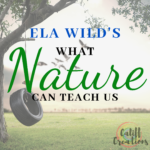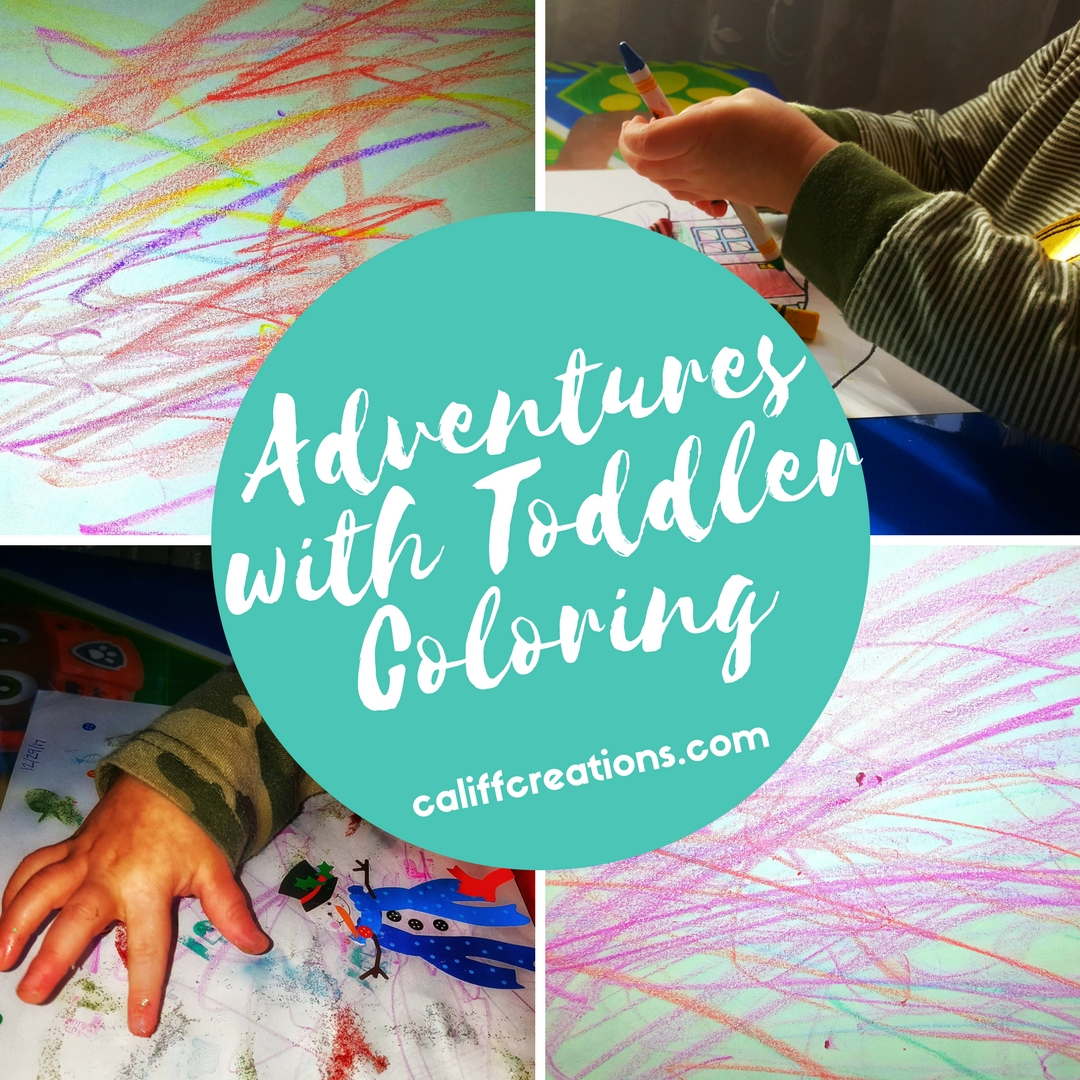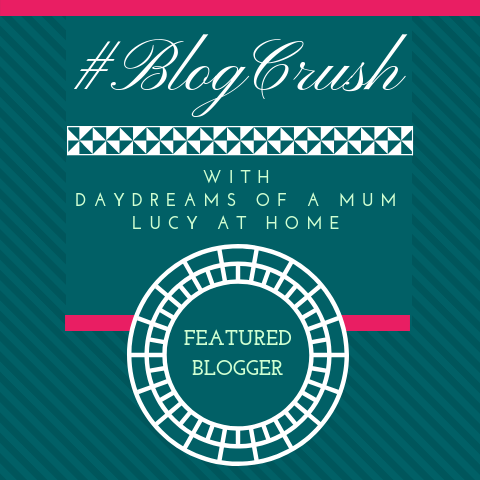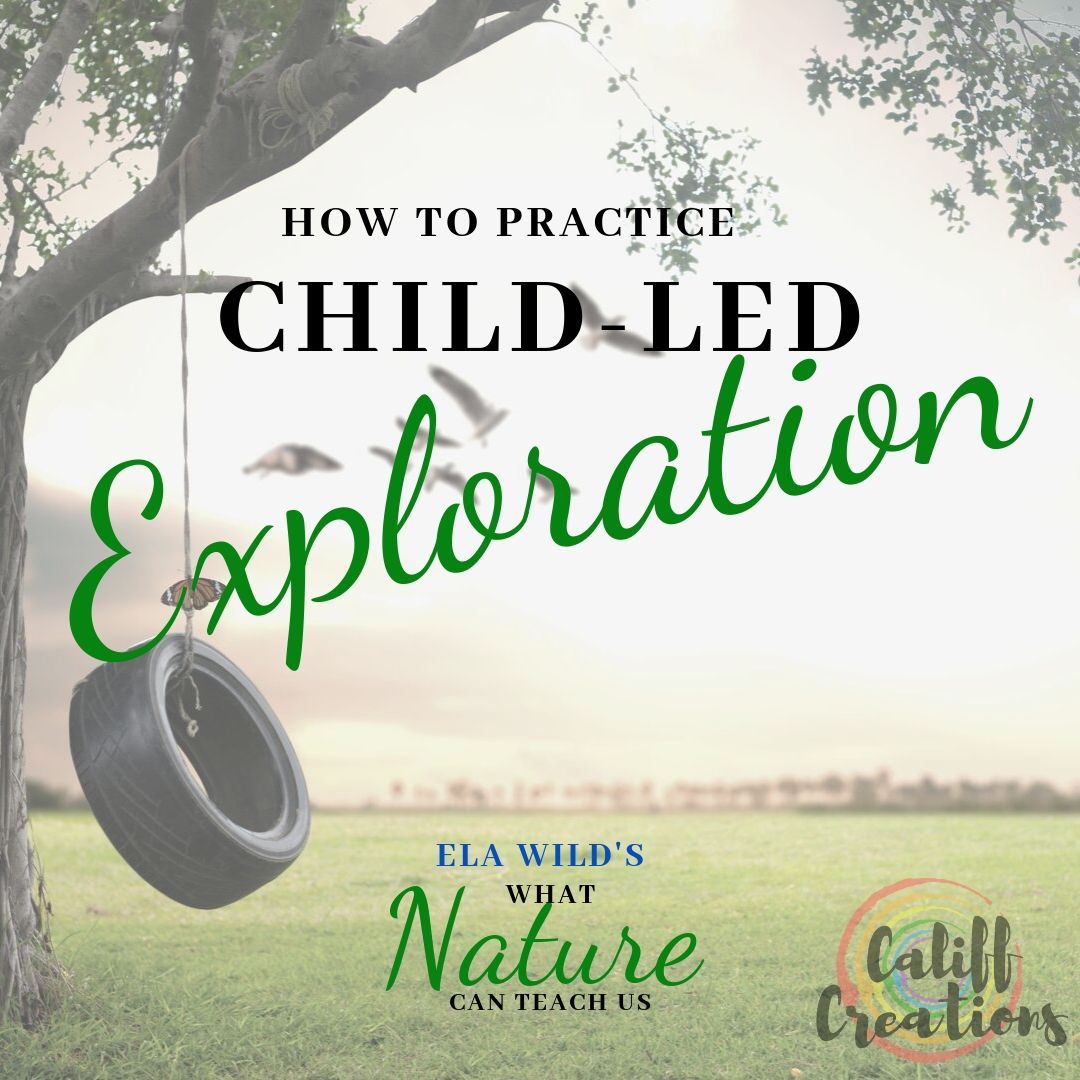
Child-Led Exploration
Ela Wild here, back with another installment of “What Nature Can Teach Us.” This month, we are talking about the benefits of child-led exploration. How it develops observational skills and helps us slow down and connect with our children. It is a great way to get kids interested in natures by using their curiosity as the guide.
One of the best ways to explore nature with your child is to let them take the lead. Nurture their natural curiosity and let it be your guide. Instead of directing them to look at what you think is interesting, take the time to watch them and find out what they think is interesting. Children get a chance to observe and follow their curiosity while you interact with them.
Once something catches your child’s interest, start asking them questions.
“Oh, that is a cool rock/stick/leaf/whatever. What color is it? How big is it? What do you think that spot is? How does it feel?”
Get them thinking about what they see.
“That water is a river and it flows ALL the way down to the ocean.”
“See how this millipede has lots of tiny legs? Watch how they all move together to help it move.”
“Have you noticed how all the leaves are falling off the trees? What do all these leaves have in common? Have they changed from the way the leaves looked on the trees?”
Whatever catches their interest, get interested in yourself.
Let your child get dirty, pick things up, touch them, turn them around and look at them. The more excitement and interest you show, the more they will be and the more connected you will feel to each other.
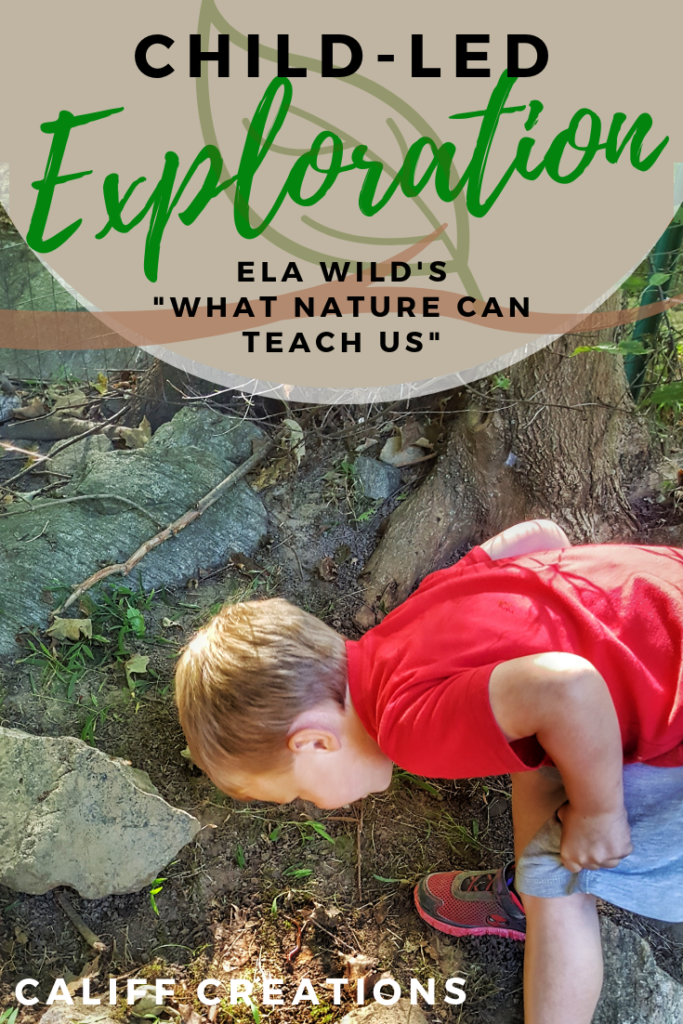
Some Examples of Child-Led Exploration
Drawing on my own experience, I often refer to hiking. Of course, you don’t have to go on a hike to practice child-led exploration. It can be done on a walk around town, the local park, or in your backyard. Child-led exploration is about stepping back and seeing the world through your child’s eyes. Then, you can ask questions and investigate whatever grabs their attention.
Hiking
This is one of my favorite ways to practice child-led exploration. I pick an area with a lot of trails and my son picks where we go (within reason of course).
Sometimes that means leaving the trail and walking along a river beach.
It might mean walking the same bit of trail several times.
However, it always means making some great discoveries. Many of the most magical spots we have explored were areas I never would have found if I wasn’t following my son’s lead.

We stop to look at things. A lot!
It’s not about the distance we hike or making it to a particular destination. Child-led hiking is about being together in nature and observing your surroundings.
It is spending half an hour walking on the same fallen tree and looking at the tangle of roots. When we see ducks, we watch (and count) them for as long as my son wants to. I’ll ask questions about the colors of the feathers and talk about how their feet are webbed so they can move through the water better. Then, we look at our own hands to see how they are different from the webbed feet of the ducks.
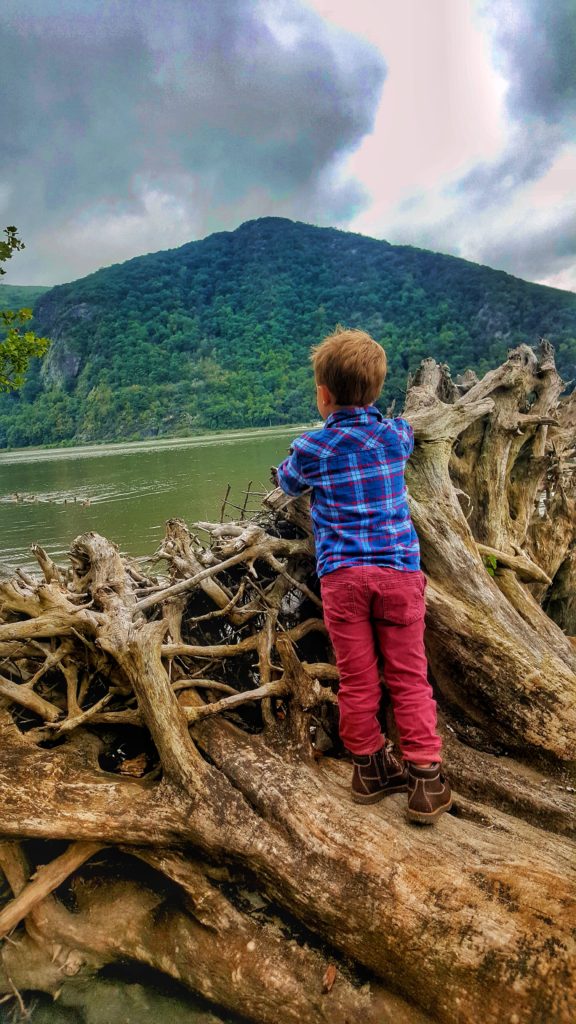
There are times that he gets interested in some less than pleasant things, like a dead fish. Instead of steering him away from it, we talk about how it smells bad. I show him how the flies and other bugs are feeding on it and talk about the circle of life. How this fish has a purpose even now. I encourage everyone to embrace all situations and not to shy away from a topic that you may not like. Follow ALL of their curiosities.
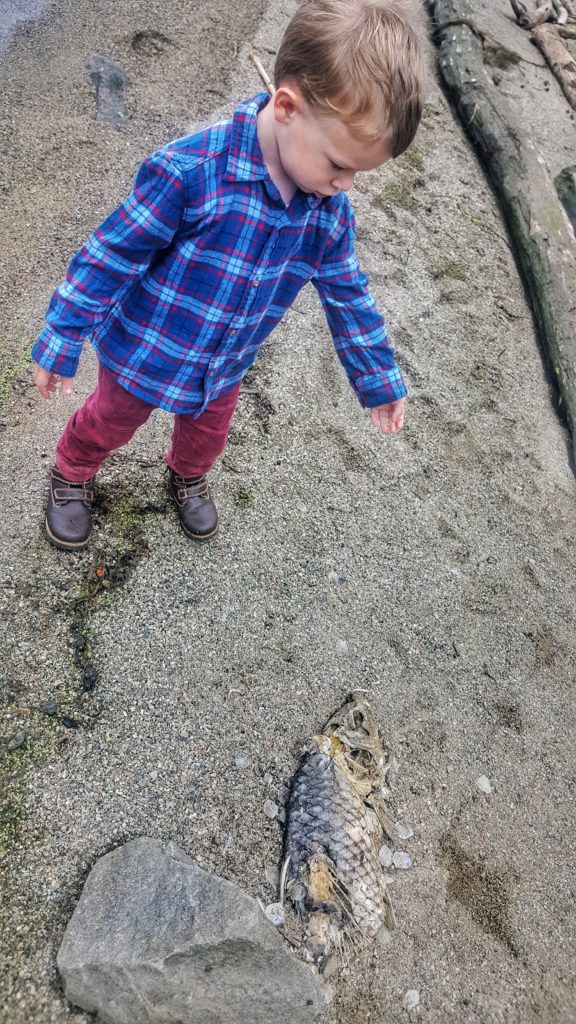
In the Park/Yard
You don’t have to go hiking to explore nature. There is so much in the local park or your yard. We watch ants, find all the colors of the rainbow, and observe the difference between green and brown leaves (see how the brown ones are crunchier?)
When I found a slug in our yard, I picked it up and showed the boys how it stuck to whatever it was on. We watched how it shriveled up to protect itself when it was scared. We touched it and felt how slimy it was. Then, we returned to slug to the grass to, as my son says, “go back to its family”.
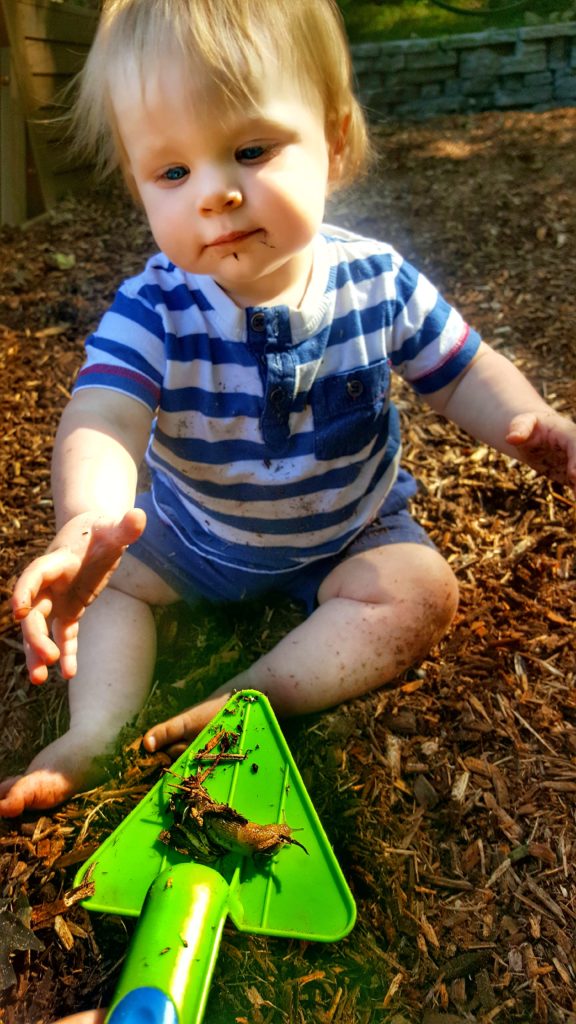

His favorite thing to find is worms. They are fascinating and we have spent many hours looking under rocks and finding worms together.
Walking around Town
You’d be surprised how much you can observe and explore walking around town. When your child wants to stop and look at flowers, let them. Point out the differences you see in the flowers and ask if they can find some on their own. Look at the colors and shapes. This sharpened their observational skills and gets them thinking about these concepts.
Let your child dictate what streets to walk down. Let them set the pace. If they want to sit and look at the clouds, help them find shapes. Talk about how the clouds are moved across the sky because of the wind just like you can feel on the ground.
Stop as often as they want to look at plants, rocks, leaves, and even dead worms!
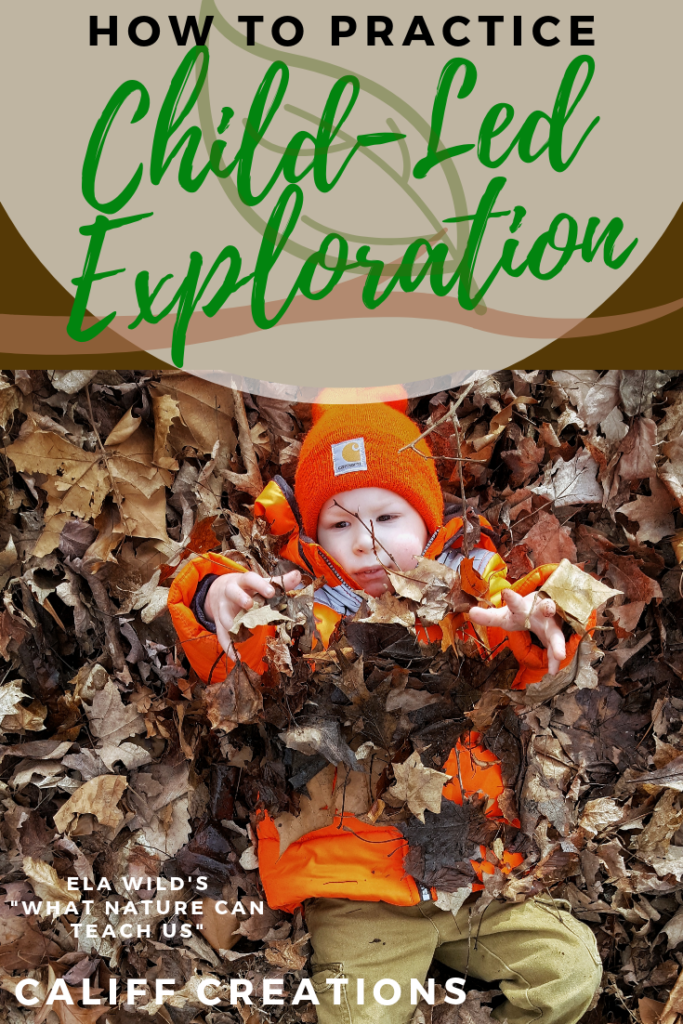
This Month’s #ElaWildChallenge: Child-Led Exploration
For the next month, practice child-led exploration whenever and wherever you can. Let your child’s curiosity be your guide.
Child-led exploration is about letting them be curious. It is getting over your expectations and allowing your child to be in control. See what interests them and then ask interests them and then ask them questions.
Tell them everything you can about what they are observing. Encourage them to look closer, to touch to smell.
Learn to see nature and the world through your child’s eyes and observe the simple, the strange, and the extraordinary through your child’s eyes.
Everyone learns best when they are interested, especially children. That is why child-led exploration is so important.
Don’t forget to post your child-led exploration on Instagram and use #ElaWildChallenge so I can see all the fun!
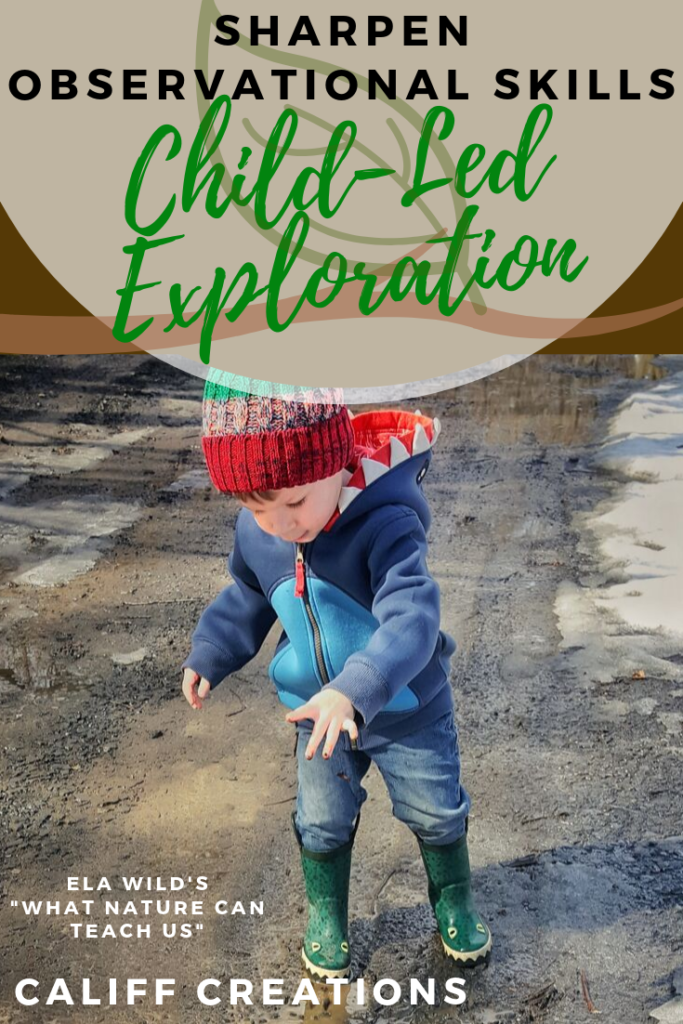
*Disclaimer: Ela Wild is a fictional alter ego of Kat Califf, owner, and creator of Califf Creations.
Follow Me!

